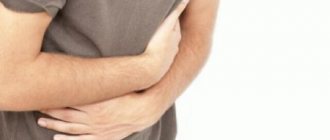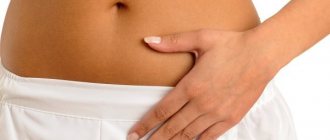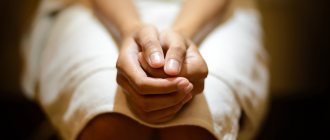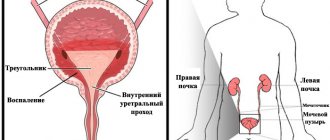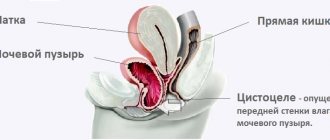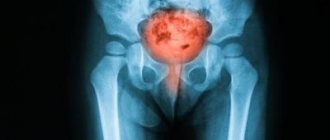- chronic precancerous inflammation of the mucous membrane of the bladder. The urinary system is lined with urothelium, a transitional epithelium, the thickness of which can change with stretching of the walls of the organs. On its surface there are integumentary cells capable of secreting secretions to protect against the effects of urine. In the event of an infection, part of the transitional epithelium is replaced by flat, which causes the appearance of white plaques - areas of keratinized epithelium that are no longer able to withstand an aggressive environment, causing an inflammatory process.
Epidemiology
This disease is diagnosed in 2% of the population.
Leukoplakia of the bladder practically does not occur in children; patients are usually over 30 years old. In 15% of cases, the inflammatory process leads to the occurrence of malignant neoplasms. Women are susceptible to leukoplakia three times more often than men, the cause is the anatomical features of the urethra.
The length of the urethra is only 3-5 centimeters, which allows infection to easily penetrate the body.
Features during pregnancy
Leukoplakia of the bladder during pregnancy usually signals infection of the organ by parasites or bacteria.
Metaplasia of the organ negatively affects the body as a whole and makes the waiting period for the child more difficult. In the early stages, pathology can contribute to the appearance of disturbances in the development of the fetus, and in exceptional situations even cause a miscarriage. This is mainly observed when the described disease occurs against the background of infection with chlamydia and trichomonas. If we talk about the last stages of pregnancy, leukoplakia often contributes to premature birth or intrauterine infection.
Health workers note that treatment of leukoplakia in a woman who is expecting a child should be done only with antibacterial medications. Full therapy is resorted to after the patient gives birth. If the pathology was diagnosed at the stage of conception planning, then leukoplakia is first treated, after which doctors allow you to become pregnant.
Causes of leukoplakia
The causative agents of the disease are infections - Escherichia coli, staphylococcus, Trichomonas, chlamydia, gonococcus, mycoplasma and others.
They enter the body in two ways: ascending - through the external genitalia or descending - through the blood and lymph from neighboring organs. The bladder is located in the pelvic cavity in close proximity to the intestines, kidneys, uterus and prostate, in case of inflammation of which the urinary system can become infected. Bacteria produce toxic substances that irritate the epithelium, contributing to local inflammation. The infection may occur for one of the following six reasons:
- A general decrease in immunity due to prolonged illness, poor lifestyle, and stress.
- The presence of foci of chronic infection in other organs in the body - dental caries, bronchitis, sinusitis.
- Casual intimate relationships without the use of barrier contraception.
- Diseases of the endocrine system leading to hormonal imbalances. It is known that an insufficient amount of estrogen contributes to the formation of keratinized epithelium.
- Congenital anomalies of the structure of the urinary system - kidney agenesis, polycystic disease, nephroptosis.
- Using an intrauterine device for longer than prescribed.
There is a version of the occurrence of leukoplakia as a result of improper formation of ectodermal cells in the embryonic period. Disturbances can occur when mutations appear during fetal development.
Useful products for leukoplakia
In order to reduce the progression of pathology and speed up recovery, it is necessary to include in the diet a maximum of healthy and natural products:
- 1 Berries and fruits will help replenish the deficiency of vitamins in the body: bananas, apricots, black currants, rowan berries, strawberries and raspberries. In winter, it is recommended to eat more citrus fruits, rosehip decoction, and dried fruits;
- 2 the lack of selenium and vitamins A and E will help compensate for all types of cabbage, beets, eggplants, yellow vegetables, sorrel, asparagus, wild garlic;
- 3 as side dishes, it is better to give preference to porridges made from lentils, legumes, buckwheat, wheat and barley;
- 4 additionally, wheat bran, unrefined sunflower oil and brewer’s yeast will help to compensate for the lack of microelements;
- 5 seafood, pike perch, cod liver, eel, veal liver saturate the body of a leukoplakia patient with healthy fatty acids, which promotes recovery;
- 6 drinks with antitumor activity: sea buckthorn juice, rowan tea, green tea, rosehip infusion;
- 7 Fresh vegetables are recommended to be consumed with fermented milk products or other sources of animal fat.
Traditional medicine cannot cure leukoplakia, but they can become an auxiliary factor as an addition to the therapy prescribed by the doctor.
- if the esophagus is affected, drink a decoction of young fir needles as tea, drink carrot and beet juice;
- take hemlock tincture. To do this, the inflorescences are crushed and poured with vodka, infused for at least 20 days in a cold place and then taken according to the following scheme; on the first day, 1 drop of tincture is diluted in 100 ml of water. Every day the number of drops is increased by one until the patient begins to take 40 drops;
- to reduce itching when the uterus is affected, tampons with rosehip and sea buckthorn oil are recommended;
- douching with chamomile decoction has an antiseptic and healing effect;
- for leukoplakia of the cervix, you can use tampons soaked in sunflower oil;
- chew propolis during the day;
- wipe the affected mucous membranes with ice cubes;
- Goose fat and coconut oil help relieve burning when urinating;
- 3 times a day, 1 tsp. take alcohol tincture of ginseng;
- if the external genitalia are affected, it is recommended to treat them with palm oil;
- if the bladder is damaged, drink a glass of fresh milk every day with the addition of 0.5 tsp. soda;
- Drink 1 glass of carrot juice daily on an empty stomach.
Classification
There are three forms of leukoplakia:
Flat - manifests itself as periodic spasms of the bladder, in most cases it is not detected. Internal changes are local opacities, slightly elevated above the surrounding tissue.
Warty - symptoms are nagging pain in the lumbar region, pain during the urination process. On the walls of the organs, lumpy white lesions with clear outlines are clearly visible.
Erosive is the most complex form of leukoplakia; the mucous membrane of the bladder is covered with multiple erosions and cracks. Practically untreatable.
Possible complications
If this disease is not cured in time, then the prerequisites for malignant degeneration will arise. Such a development cannot be excluded, since today there is no irrefutable evidence of the involvement or non-involvement of these pathological processes in oncological transformations of tissues. In addition, foci of keratinization can completely disable this area of the organ from working, and therefore there is a threat of disruption of the reservoir functions of the bladder.
Symptoms of leukoplakia
Patients most often present with pain in the pelvic area, which initially appears periodically and then becomes constant.
Another sign of the disease is problems with urination. The patient feels frequent urges, constant fullness of the bladder, pain and burning in the lower abdomen, intermittent flow, and a general deterioration in condition. The symptoms of leukoplakia are very similar to cystitis. If there is no improvement in the condition during treatment, it is important to immediately contact a urologist for a re-examination; a false diagnosis may have been made. In the case of incorrectly applied methods of combating the disease, the risk of cancer and kidney inflammation increases.
The bladder neck is most susceptible to this disorder. In this case, the symptoms are the most vivid, the pain is constant and aching.
Types, stages and symptoms of the disease
Depending on the location, in medicine there are two types of leukoplakia:
- Leukoplakia of the bladder neck is the most common.
- Damage to the bladder itself.
The disease can take the following forms:
- Squamous - with this form, a change in the color of the mucous membrane occurs.
- Warty - foci of keratinization appear.
- Erosive – this form is characterized by the formation of erosions and cracks.
According to the nature of the course, the pathology is divided into three stages:
- The first stage - the affected area is covered with epithelial cells.
- The second stage is the formation of squamous metaplasia.
- The third stage is keratinization of damaged areas.
Symptoms of leukoplakia of the bladder are similar to many inflammatory diseases of the genitourinary area, for example, cystitis.
Symptoms of bladder inflammation may include the following:
- discomfort when emptying the bladder (pain, itching, burning);
- urine may contain blood and flaky discharge;
- possibly urinary incontinence, this symptom usually occurs when the pathology is localized in the neck of the bladder;
- leukoplakia of the bladder also manifests itself as pain in the lumbar region and lower abdomen;
- false urge to go to the toilet;
- The stream of urine during urination is intermittent.
Additional symptoms:
- pain or discomfort during sexual intercourse;
- weakness;
- chills;
- elevated temperature.
Since leukoplakia has common symptoms, it is often confused with other inflammatory processes. As a result, incorrect treatment is prescribed. Medical statistics show that many women diagnosed with chronic cystitis actually had leukoplakia. It was possible to establish it only after complex diagnostic measures.
Therefore, if a woman has the above symptoms, then she must definitely visit a urology office and undergo an extended range of examinations.
Diagnostics
If any symptoms are detected, you should consult a urologist.
Diagnosis of the disease begins with listening to the patient’s complaints and taking a medical history. Next, a general urological examination of the genital organs is carried out, the doctor also performs palpation of the genitals and tapping of the lumbar region. To detect infection, increased levels of red and white blood cells, a general and biochemical urine test and a Nechiporenko test are performed. During the examination, a smear is taken for bacteriological examination, but infection may not be detected during the period of remission, that is, the subsidence of symptoms, so it is best to carry out diagnosis during relapses.
The main method for detecting leukoplakia is cystoscopy; it is a more informative diagnostic method than ultrasound or x-ray. This study is carried out using a special device - a cystoscope, which allows you to assess the condition of the mucous membrane of the bladder and urethra, identify the presence of affected areas and carry out the necessary surgical interventions. The procedure allows you to take a histological sample of tissue for biopsy to detect atypical cancer cells.
What complications are caused by leukoplakia of the bladder?
The consequences, as is known, are varied. First of all, the disease will cause inconvenience in everyday life. In addition, in case of neglect, the walls of the urinary canal become hard, which is why the bladder cannot hold the required amount of urine. Over time, it loses its functions, since urine is retained for no more than 40 minutes. Along with such complications, renal failure, dysuria and dysplasia are acquired, which can lead to death.
In the case of complete lack of treatment, urethritis develops, as well as cancer, because this ailment is precancerous, and the cells that were formed during the course of the disease form into cancerous tumors, which can also lead to death.
When you detect certain symptoms, keep in mind that treatment must be effective and timely, since the consequences will be the most unpredictable.
Treatment of leukoplakia
Treatment of leukoplakia of the bladder in mild form begins with eliminating the root cause of the disease using antibacterial and antiviral drugs, and general restoratives.
These include bifidumbacterin, lactobacterin, acylact, acipol. Women are most often prescribed Terzhinan vaginal tablets, which help eliminate infectious and inflammatory processes. In some cases, drug treatment is ineffective, because with a combination of infections, some types of bacteria remain resistant to antibiotics, causing relapses. Irrigation of the bladder with drugs that restore damaged mucosa is often used. These include solutions of hyaluronic acid, heparin, and sea buckthorn oil.
Physiotherapeutic procedures are also used, such as electrophoresis with anti-inflammatory drugs and magnetic therapy. This treatment acts directly on tissues, which leads to their regeneration and reduction of inflammatory activity, improving general condition. The doctor often prescribes antibiotics such as amoxicillin, nifuratel, furazolidone, and doxycycline.
If the above methods are ineffective, surgical intervention should be resorted to. TUR of the bladder is an abbreviation for transurethral resection - a cystoscopic operation to remove ulcers, cysts, plaques and other formations on the mucous membrane of the bladder. The advantage of this intervention, unlike the abdominal one, is the absence of incisions, blood loss and severe complications.
The TOUR lasts about an hour, is carried out under anesthesia and begins with hygienic treatment of the external genitalia with an antiseptic. A cystoscope, consisting of a tube about 30 cm long, equipped with lenses and optical fibers, as well as a camera to transmit information to a computer screen to determine the area and extent of surgical treatment, is then inserted through the urethra.
The work is carried out with the bladder filled with saline, and consists of removing areas of keratinized tissue using an electric current or laser and collecting histological samples for pathological examination. It is important to check other organs of the urinary system because the infection may have spread through the urine flow.
Electrocoagulation is performed with an electric knife, which is used to excise tissues susceptible to keratinization, and coagulation of the vessels occurs, which contributes to the appearance of a crust on them. This operation is painful, after which postoperative symptoms are observed, such as the presence of blood in the urine, pain when urinating, pain when walking.
The laser treatment method is advantageous because it allows for precise surgical interventions, removing small areas of the bladder mucosa without affecting the deep muscle layers. Cauterization during surgery helps destroy pathogens in the epithelial layers. In contrast to electrocoagulation, a more delicate scar is formed after surgery, which helps to reduce the area of the inflammatory process, rapid recovery of the bladder mucosa from the scab, and a reduction in the period of postoperative rehabilitation.
Traditional medicine and diet
Treatment of leukoplakia of the bladder with traditional medicine is allowed only as an addition to the main therapy, since it is impossible to completely eliminate the disease with folk remedies.
The most popular recommendations of alternative medicine:
- Cranberry – this berry is useful for preparing compotes and fruit drinks; it has an antimicrobial effect and saturates the body with essential microelements. It contains: magnesium, potassium, iron, organic acids. It also contains vitamins B, A, and C.
- Bearberry - this plant helps reduce the symptoms of the disease.
- Sunflower oil – to eliminate itching, it is recommended to insert tampons with sunflower oil.
- Douching and washing with herbs - chamomile, St. John's wort, string, oregano are suitable for these procedures. These plants can have a disinfectant and anti-inflammatory effect.
- Birch tar - it is believed that the use of tar also promotes rapid recovery. There are many recipes, the simplest one: add a couple of drops of tar to a glass of hot milk.
- Sprouted wheat sprouts contain mucopolysaccharides, which have a beneficial effect on the bladder mucosa. You can add them to almost any dish: salads, soups. They need to be eaten fresh.
If leukoplakia is diagnosed, then dishes and products that can cause irritation of the mucous tissue are excluded from the diet.
This category includes:
- fatty, fried, spicy foods;
- pickles and marinades;
- strong coffee, any alcoholic drinks;
- cabbage, sorrel, garlic.
It is recommended to include in the menu:
- porridge (buckwheat, oatmeal, rice);
- soups with vegetable or chicken broth;
- dairy and fermented milk products;
- lean fish and seafood.
Particular attention should be paid to the drinking regime - it is recommended to drink at least two liters of liquid per day.
By following a drinking diet, all toxins and harmful bacteria are removed from the body.
Healthy to drink:
- clean water;
- berry fruit drinks;
- herbal teas.
Prevention
Leukoplakia is an infectious disease, so it is necessary to take measures to prevent sexually transmitted infections. To do this, it is important to use a barrier method of contraception and not lead a disorderly intimate life. It is necessary to observe the rules of personal hygiene
; in case of unprotected sexual intercourse, wash the genitals with antiseptic agents - chlorhexidine or miramistine.
This painful condition can occur against the background of other infectious diseases, so it is important to begin treatment for any diseases in a timely manner. You need to monitor your general health, avoid hypothermia, stress, and maintain your immune system with vitamins and antibacterial drugs. Take hormonal medications for hormone imbalance.
How to get rid of pathology?
Drug therapy
Treatment of leukoplakia of the bladder is aimed at relieving the factors that provoked the pathology. The main group of pharmaceuticals that are used are antibacterial medications. Before their appointment, the patient will need to undergo a microflora sensitivity test. Mostly, the course of therapy takes at least 3 months, during which the doctor prescribes different combinations of medications. The disease will need to be treated until the pathogen is completely destroyed, which will be confirmed by 3-fold negative urine culture tests. The following antibiotics are mainly prescribed:
- "Lefloxacin";
- "Ciprofloxacin";
- "Norfloxacin".
In addition, they resort to anti-inflammatory medications. Prednisolone is often used, which also has anti-edematous properties. Since the development of leukoplakia of the bladder is affected by impaired immunity, patients are also prescribed immunomodulators. Doctors consider Interferon to be the most effective pharmaceutical drug. In addition, irrigation with various solutions is often used. This is done to create protection for the mucous membrane, which will protect the organ from the effects of pathogenic microorganisms and uric acid, which is part of urine. Medicines are introduced into the bladder using a catheter. Therapy takes a long time, its duration depends on the severity of the disease. Hyaluronic acid or Heparin is used for irrigation.
Physiotherapy
Physiotherapy for leukoplakia of the bladder allows you to eliminate scars without surgery.
This treatment method is based on getting rid of adhesions and scars that were caused by inflammatory processes. In addition, with the help of physiotherapy, it is possible to improve the restoration of the mucous membrane. The following methods are used:
- electrophoresis;
- microwave;
- magnetotherapy.
Treatment with folk remedies
Doctors draw patients’ attention to the fact that using healer’s recipes will not help get rid of the disease, but will only reduce its symptoms. Treatment with folk remedies for leukoplakia of the bladder should be carried out in combination with conservative therapy. The most commonly used recipes are:
- Calendula. Take 4 tablespoons of the dried plant and pour 0.5 liters of boiling water. Send it to a warm place for half an hour, after which it is expressed using gauze. Drink 100 ml of infusion per day. The course of therapy should not last more than 3 days. They also resort to a bath, for which 500 ml of the prepared decoction is added to 2 liters of warm water.
- St. John's wort. Add a tablespoon of the plant to a glass of boiling water and boil for 20 minutes. The resulting infusion is divided into 3 doses and consumed throughout the day.
- Wheat. The sprouted grains are washed and placed in a damp cloth for 2 days. When the fabric dries, it will need to be moistened. After sprouts have formed, the grains are added to dishes, for example, salads.
Diet for leukoplakia
The essence of dietary nutrition is aimed at eliminating foods that act as irritants to the mucous membrane of the bladder. Food is prepared in the oven, steamed or boiled. The menu should include the following food:
- fruits and vegetables (except cauliflower, tomatoes, sorrel, garlic and onions);
- sour milk;
- lean meat and fish;
- cereals
The diet for leukoplakia of the bladder involves the exclusion of the following foods:
- spicy and fatty foods;
- spices and seasonings;
- marinades;
- pickles;
- broths prepared with meat and fish;
- smoked meats;
- strong coffee;
- alcoholic and energy drinks;
- canned food;
- radish;
- White cabbage.
In addition, the patient will need to follow a drinking regime. It is important to drink at least 2 liters of liquid per day, taking into account not only water, but also all the liquid that enters the body, including first courses, juices, and teas. By drinking plenty of fluids, it will be possible to flush out pathogenic microorganisms from the bladder and reduce the effect of uric acid on the injured mucous membrane. Doctors recommend drinking the following liquids:
- special kidney teas that can be purchased at pharmacy chains;
- unsweetened green tea;
- fruit drinks from berries;
- non-carbonated mineral water;
- purified water.


